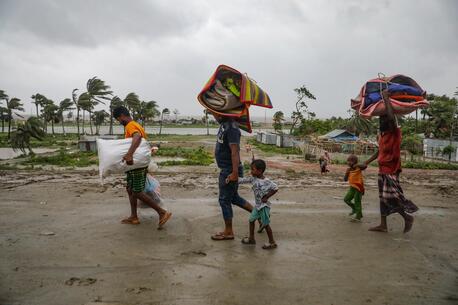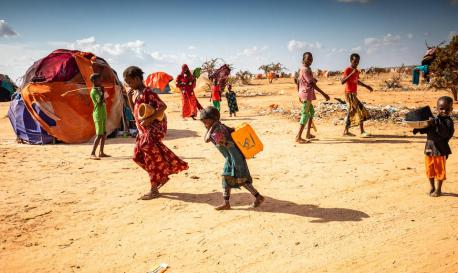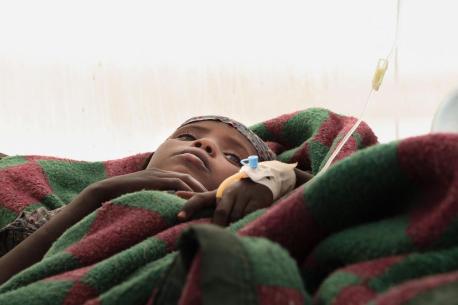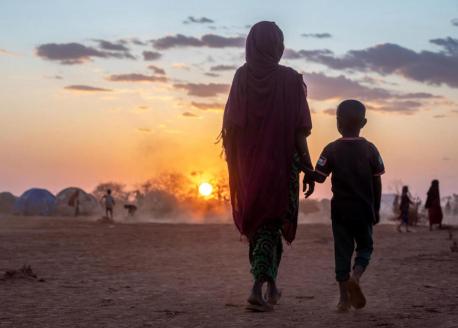
The Climate Crisis and UNICEF: How to Create a Livable Planet for Every Child
Virtually every child is already exposed to disruptive climate hazards. Urgent action is needed to ensure the safety and protection of future generations. An overview of what needs to be done — and what UNICEF is already doing — to address climate change.
The Fight of Our Lives
Even before the release of the UN's Intergovernmental Panel on Climate Change March 2023 report, UNICEF had already resolved to double down on its response to what is by many measures a child rights crisis.
Responding to the latest findings of scientists, UNICEF Executive Director Catherine Russell reiterated UNICEF's position: that climate action must be accelerated to ensure the safety and protection of future generations.
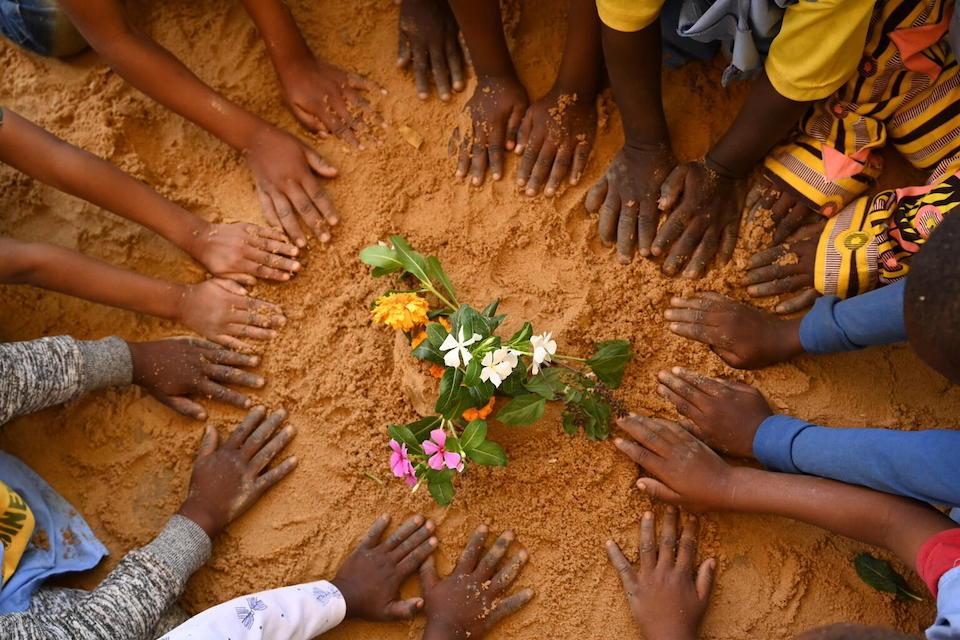
The world is already experiencing the ravages of climate change: record-breaking drought in the Sahel and Horn of Africa. Catastrophic flooding in Pakistan. Blistering heat waves across parts of Europe and the Middle East.
These events, all linked to and made worse by climate change, are not only deepening existing humanitarian crises in all of these places. They are also unleashing new waves of mass displacement, malnutrition, disease and increasing competition — and provoking conflict within communities, often violent, over scarce resources.
Let us show succeeding generations that when they needed us to fight for their future, we did. — UNICEF Executive Director Catherine Russell
"World leaders continue to make inadequate promises and slow progress — on emissions reduction, climate finance, adaptation and on strengthening community resilience," Russell said. “About 4.2 billion children are expected to be born over the next 30 years. It is our collective responsibility to make sure they are prepared."
Almost every child on Earth is exposed to at least one type of climate or environmental hazard. Half of the world's children — or about 1 billion children — live in places considered extremely high risk due to climate change impacts.
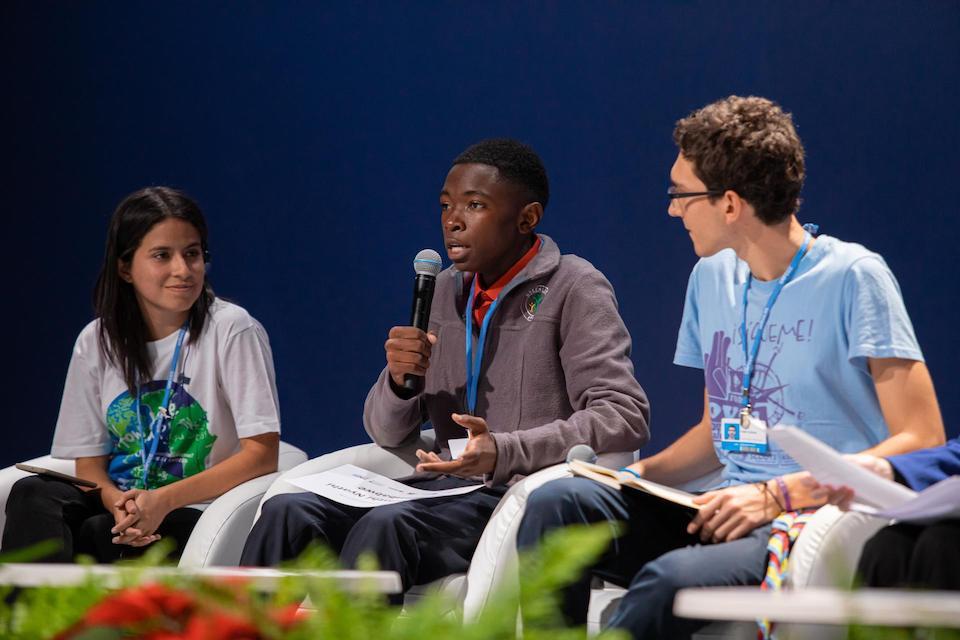
Climate change solutions
UNICEF's climate call to action urges:
- all parties to "super-charge" efforts to close the emissions gap and accelerate the transition from fossil fuels to renewable energy
- governments to adopt climate-resilient development policies and urgently adapt critical social services children rely on — like water and sanitation, health, nutrition, education and child protection — to the new climate reality
- increased funding for climate adaptation and mitigation; the return on investment in things like early warning systems, climate-resilient water systems and other infrastructure is huge, while a failure to implement national resilience and adaptation plans will likely lead to much greater suffering and loss
- increased focus on disaster risk reduction training and "green skills" building — armed with skills such as the ability to gather and interpret climate data and identify and implement climate-friendly technologies, young people will be empowered and better equipped to participate in changing economies and pursue more viable livelihoods
"As climate change intensifies in the coming decades, we expect that the impact on lives, livelihoods, food and water systems will be devastating — and that children will suffer most of all," Russell says. The IPCC report is "a clear call that we must act now to secure a livable and sustainable future for all."
How UNICEF is addressing climate change
UNICEF works with partners in over 190 countries and territories finding ways to advance progress in all four of the above action areas related to climate change and the environment.
A major priority for UNICEF is supporting and empowering children and young people to be climate and environmental champions. This includes ensuring that their voices, perspectives and ideas are heard at the highest levels; providing them with the education and skills they need to be agents of change in their communities; and setting them up to thrive in the future green economy.
Other aspects of UNICEF's climate response include:
- generating evidence to support smarter, more efficient service delivery
- helping to build climate-resilient and environmentally sustainable hospitals, schools and water infrastructure
- working with communities, governments and public and private institutions to improve understanding of climate risks — while also strengthening their capacities for adapting to and/or mitigating those risks across critical systems (health, education, water and sanitation)
- advocating for decision makers to put children at the center of their climate and environmental policies — and to ensure that those policies are sustainably financed
- developing and shaping markets, and helping to build new public-private partnerships that can help lessen climate and disaster risks
"The decisions we make and the actions we take are shaping the world our children will inherit," Russell says. "Let us show succeeding generations that when they needed us to fight for their future, we did.”
Help protect children from the impacts of climate change. Take Action Now.
HOW TO HELP
There are many ways to make a difference
War, famine, poverty, natural disasters — threats to the world's children keep coming. But UNICEF won't stop working to keep children healthy and safe.
UNICEF works in over 190 countries and territories — more places than any other children's organization. UNICEF has the world's largest humanitarian warehouse and, when disaster strikes, can get supplies almost anywhere within 72 hours. Constantly innovating, always advocating for a better world for children, UNICEF works to ensure that every child can grow up healthy, educated, protected and respected.
Would you like to help give all children the opportunity to reach their full potential? There are many ways to get involved.



